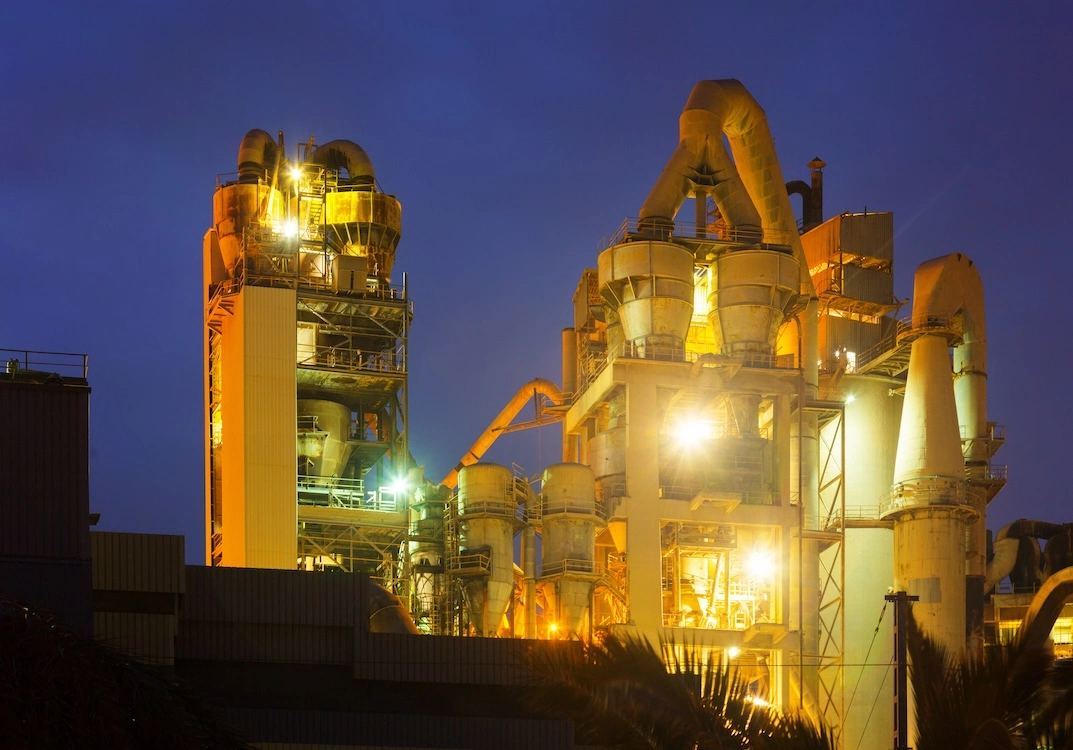
As one of the biggest global emitters historically reliant on fossil fuels, cement producers face immense pressures to reduce their carbon footprint. To achieve this, producers are increasingly switching away from fossil fuels to alternative fuels such as everyday rubbish, plastic waste, industrial waste, whole and shredded tyres and wood.
Complexity of alternative fuels
While these lower carbon alternatives are preferable from both a cost and carbon perspective – in some cases, producers are asked to burn municipal waste for free – the rush to burn alternative fuels has introduced a new source of operational variability to cement plants.
Unlike coal, these fuels come from diverse sources and can vary significantly in composition. They may also contain chemicals that lead to buildups and blockages in the plant, potentially disrupting production and increasing the risk of dangerous thermal runaway events.
To mitigate these issues, frequent shutdowns are required for manual cleaning and maintenance to prevent build-ups and blockages. However, the knock-on effect of this downtime is reduced throughput and escalating operational costs.
The role of AI
AI solutions are particularly well-suited to managing complex systems like those in cement plants. AI can comprehend and identify patterns in large data sets with speed and accuracy, enabling plants to use more of their data to generate deeper insights and operate in optimal operating windows more often.
For example, AI can simulate the effects of different fuel mix combinations, learning how the blend of various alternative fuels can impact plant performance. By predicting potential constraints – such as fuel availability or price on the supply side, or airflow and blockage risk on the process side – and adjusting plant controls accordingly, AI tools can maximise the use of alternative fuels while avoiding operational risks.
In addition, the AI can optimise the plant’s overall financial performance by modelling how different fuels affect performance, allowing plant operators to make informed trade-offs between fuel costs, heat consumption and production output.
Optimising combustion with AI
The variability of alternative fuels makes them more difficult to burn than fossil fuels, and ensuring the best fuel-to-air ratio is a particular challenge when it comes to burning. By dynamically adjusting airflow targets, Carbon Re’s AI models enable more efficient combustion, minimise fuel waste, reduce specific heat consumption and save on fan power and electricity costs.
With specific AI models tailored to each kiln, operators can be confident in their ability to increase both the use and variety of alternative fuels. Read more.
AI-powered blockage detection
Advances in AI are transforming how cement plants monitor critical operational parameters that contribute to buildups and ring formations.
Carbon Re’s blockage detection models integrate AI with real-time data from pressure, temperature sensors, and gas analyser data to detect early signs of build-up and operational anomalies. Our models analyse trends in oxygen levels, calcining temperatures, and pressure variations across the preheater tower to proactively suggest adjustments.
This not only prevents potential blockages but also ensures the plant operates within optimal parameters, thereby reducing maintenance downtime and improving overall efficiency. More about how AI aids blockage detection here.
The technology we need to slash global carbon emissions by 2030 is here
Despite the dire warnings from the IPCC ahead of COP29 in November – the technologies we need to slash our global carbon emissions in a meaningful way are already here. We simply need the political and commercial will to adopt them today.
Carbon Re’s 2023 whitepaper Three technologies to reduce climate change highlights existing technologies with the potential to make a significant impact on carbon emissions by 2030 – including substitute cementitious materials (SCMs) and alternative fuels. Enabling both of these solutions is the AI that increases energy efficiency, SCM blending and alternative fuel use.
While these are effective ways to reduce carbon emissions in the short term, they cannot completely decarbonise the process, and the cement industry’s roadmap for future decarbonisation is heavily dependent on carbon capture and storage. However, much better control of the increasingly complex manufacturing process will be required if we have any hope of carbon capture being viable – and emerging AI-powered control solutions are uniquely positioned to achieve this.
It is clear that AI has a key role to play in industrial decarbonisation today, and for the future.
Creating order from chaos: a Carbon Re whitepaper
To read more about how AI can optimise alternative fuel use in cement production, please see our whitepaper or speak to a member of our sales team.

